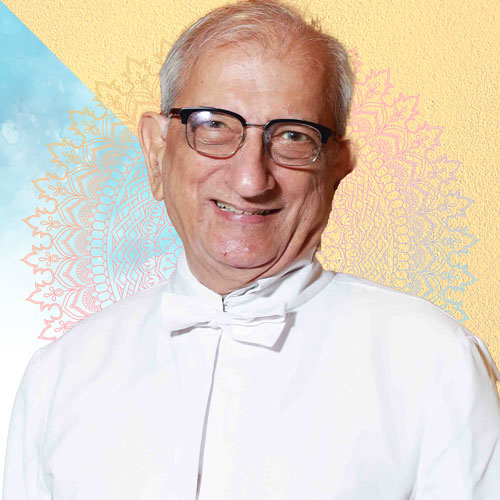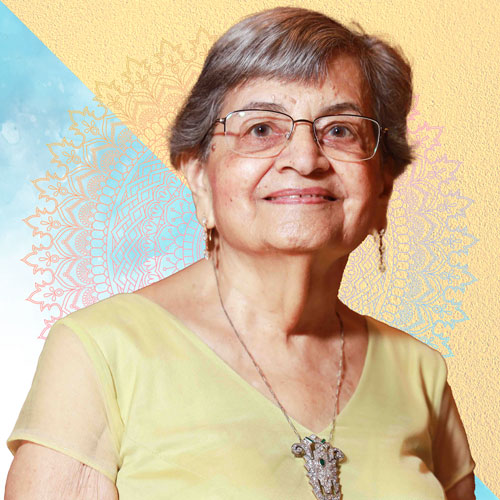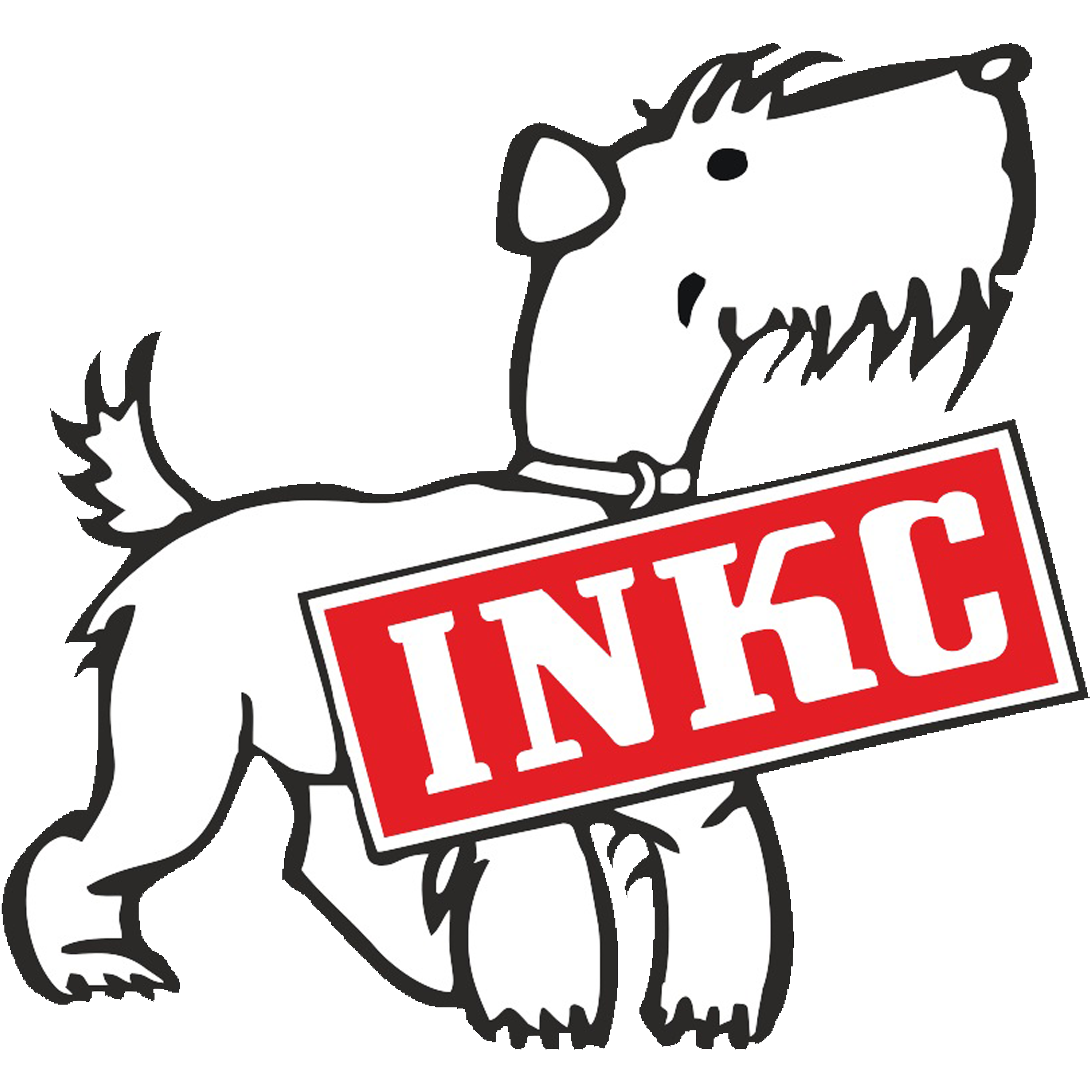An Overview
Our Governing Council

Mr. Phiroze B. Javeri
President

Mr. Rustam Kumana
Vice President

Mrs. Ratty P. Javeri
Founder Member and Secretary

Mr. Sohrab K. Vazifdar
Treasurer

Mr. Chetan Vengurlekar
Joint Secretary

Mr. Cyrus Dubash
Council Member

Mr. Lochen Kharawala
Council Member

Dr. Freya Javeri Kharawala
Council Member
General Instructions
Registration of Dogs
the name and full address of Breeder as well as Owner, establishing transparency, and enabling those intending to either buy the puppy or use the dog at stud to contact the breeder and/or owner directly for any clarification or confirmation of facts;
the color & markings of every individual ancestor down to three generations. Mixing of certain colors in certain breeds is not recommended, even if the litter may be registered. Our effort enables a competent person to keep proper track of color inheritance as applicable to each breed. And astute buyers can also see which colors lie behind their new puppy.
The importance of having an authentic Dog Registration Certificate
Registration of Kennel Name
Concern for the bitch, and importance of the breeder
Dog Shows
Specialty Shows: A specialty show should do something special for the breed, and not be just another dog show restricted to a specific breed. In our effort to make such Shows an opportunity to gain knowledge of the breed, we precede the Show with a Workshop, which every exhibitor has to compulsorily participate in. For example, our GSD Workshop and Dog Show were conducted and judged by Chris Walkowicz, co-editor of the massive Atlas of Dog Breeds. Richard Duckworth, a judge at Crufts, also addressed the participants.
Obedience Tests: In our Obedience Tests we follow the schedule of exercises as prevailing in U.K., i.e., Tests ‘C’, ‘B’, ‘A’ and so on. Apart from that, we are the only Kennel Club world-wide to allot separate points (a significant 10% of the total) in each Class for “Dog working happily with the Handler as a team”. Our Judges are encouraged to deduct these points liberally when a dog shows signs of fear of the handler, or works glumly and without enthusiasm. Dogs must be happy to work, or we would rather not see them entered for Obedience at all.We have also reserved the ‘Pre-Beginners Class’ for non-professional owner-handlers only. We wish to encourage owners and family members themselves to relate with their dogs and bring them into the ring. It is unfortunate that it is considered fashionable to have one’s dog taken in by a ‘handler’. We also have an annual INKC Obedience Dog of the Year.Although Obedience Tests are open for cross and mixed breeds, they seldom participate. People who keep mixed breeds need to increase their involvement with their pets, and make the most of this opportunity.
Agility: The INKC introduced Agility in India. Close rapport and co-ordination between dog and handler are essential, and the sport can be enjoyed together by both. Difficulties related to making, transporting and deploying the necessary equipment, however, restricts the popularity of this worthy sport.
Recognition of breeds: We have recognized and encouraged our Indian Breeds like the Mudhol Hound, Pashmi, Rajapalayam, etc., from the very inception of our Club. In fact, the Judge for our first Show in 1959 was the late Maj. W. V. Soman, author of the small but valuable book, The Indian Dog. Another notable person well-versed with Indian breeds who has judged our Shows was the redoubtable Shri Mukandi Lal of Garhwal. Our encouragement of Indian breeds was well-rewarded when a Pashmi won Best-in-Show under a foreign Judge in Mumbai.Again, while we have throughout recognized the Spitz as a separate breed, another Club used to register such dogs either as Pomeranian or Samoyed! When they did realize that the ubiquitous Spitz could not be wished away and that their practice was contaminating the registers of the Pomeranian as well as the Samoyed, they began registering it as ‘Japanese Spitz’. The same dogs have now become ‘German Spitz’ – a strange and unexplained change of origin.
Dog behavior and training classes: The INKC has invited foreign experts in the field of dog behavior and training to come down and conduct classes for our dog-owners in Mumbai, Nasik and Ahmedabad. Participants in these classes have had the rare opportunity of learning from the likes of John and Moira Rogerson, John Uncle and David Bates the new understanding of dog behavior. The new understanding of dog behavior and the entire change in the methods of training have been revealing and rewarding, as acknowledged by the novices as well as by some professional trainers who participated. They have thereafter changed over to the new methods of training, which are entirely humane, and fun for the dogs. Moreover, some of the participants have thereafter taken up counseling dog-owners on behavior problems, introduced the concept of dogs for the disabled, therapy dogs, search-and-rescue dogs, and so on. Such training classes have a cascading effect that benefits all dogs, not just the pedigree dogs.
Dog-lovers’ test: There are always a few who know, and many who think they know. To see who’s who, and to encourage them all to know more and know better, we have devised a Dog-lovers’ Test, which is a written paper with each question divided into three categories: elementary, intermediate and advanced. The participant answers them all, as we do not expect him/her to pre-judge his/her competence. He/she then stands to get a Certificate depending on which level of questions has been answered to obtain the required.
The road ahead: what needs to be done for dogs and dog lovers
The Indian National Kennel Club (INKC) was established in 1957, and has completed 50 years in the fulfillment of our objectives as defined in our Main Purpose Statement. Our first concern is to promote the love of dogs in general. Our effort is to inform, educate and empower the general dog-owner and hobbyist-breeder, leading to a better understanding of their dogs and establishing a mutually fulfilling relationship between them.
A pedigree is a record of several generations of a pure-bred dog’s parentage, and is an indispensable tool for breeding dogs with desirable characteristics. It is essential, however, that every name in this pedigree represents a dog that has been duly registered by the Kennel Club; the name of an unregistered dog has no place in an authentic pedigree. A proper dog register is the backbone of a Kennel Club.Our procedure for registering Single Dogs and Litters is given in our Guidelines for Registration. We take utmost care to ensure that our Dog Registration Certificates carry authentic particulars, as this is the very basis of breeding intelligently. Every signature of the Breeder and Owner of Sire as submitted by the Applicant is verified. We have in our records all Application Forms with every Applicant’s signature right from 1957 to date.We are the only Kennel Club which issues to the Breeder a Certified Transfer Form (C.T.F.) for Litter Registration. The limited period of validity of the C.T.F. (up to puppies’ age of four months, by which time all puppies may reasonably be expected to be sold) discourages intentional collection of permanent Registration Certificates as stock-in-trade by dealers, traders and even some unconscionable breeders, to be conveniently handed out with other dogs of doubtful origin. As each puppy changes hands, the Breeder hands over to the new owner that particular puppy’s C.T.F. The new owner then submits this C.T.F. to the INKC with an Application for the final Dog Registration Certificate in her/her name. There is no further fee to pay, as it has been included in the fee paid by the Breeder for obtaining the Litter Registration. There is, therefore, no reason for the new owner not to get his/her dog’s Registration Certificate in his/her own name. The C.T.F. also permits the new owner to give the dog a name of his/her choice, provided the Breeder has not exercised prior option of naming it himself/herself.
We are also the only Kennel Club in India that prints on all Dog / Litter Registration Certificates:
It is ironic that INKC’s success in making potential dog-owners aware of the importance of a Registration Certificate has encouraged unscrupulous breeders and dealers to generate fake Registration Certificates carrying wrong particulars. Often, the dealer who sells a puppy tells the purchaser that the Registration Certificate will take time to be issued. This is entirely misleading, but it gives the dealer an opportunity to evade providing a Registration Certificate at all. Others demand extra money for the Certificate, which is totally unethical. These goings-on indicate that Registration Certificates can be purchased from the market, or otherwise obtained fraudulently, given a little time.We have “zero tolerance” for persons providing false particulars in dog registration. Indeed, many of their ilk do not come to us, but prefer to go elsewhere for getting their dogs and litters registered. They are not only more comfortable where few questions are asked, but also their patronage appears to be valued there. We lose out on volumes because we prefer to adhere to principles.100% integrity of dog registration, however, will be assured only when DNA profiling becomes affordable and accessible, which we believe will soon happen. The INKC will then be the first to adopt this method as routine verification.
Those who wish their identity as breeders to be established with the dog’s name opt for registering their Kennel Name, which can then be added exclusively by them as an affix to the dogs bred or owned by them. Such breeders are required to agree to observe some points comprising ethics applicable to such pursuit. When Kennel Name owners register a litter, we also issue to them along with the puppies’ CTF’s another form, which they are expected to return to us as soon as each puppy leaves their custody, telling us who has taken the puppy. When the Breeder hands over his/her puppies to some middle-men, he/she is not in a position to send us this form.
In dog breeding, concern for the bitch begins with the class of people who opt to keep a bitch. It has ever been our endeavor to persuade genuine dog-lovers to seriously consider keeping a female instead of mindlessly insisting on having only a male. We then encourage them to experience the pleasure of breeding from them. This sees bitches going to good homes at a price comparable to the price of a male, and not just being picked up cheap by back-yard breeders. In the first 15 years of our Club, we observed that at most times, the four Best in Show winners at all Dog Shows (not just INKC Shows) were males, as females failed to make their mark among outstanding specimens. To inculcate the right attitude among dog-owners towards bitches and to effect a correction, we were the only Kennel Club to then introduce a special trophy for The Best Female in Show, if none was in the first four. Within just a few years we found that the popularity and standard of females had improved to the extent that there happened to be at least one female in the line-up. Our special trophy – with other encouragement and advice — had done its job; it became redundant, and was soon withdrawn. For many years now, it has not been unusual for a female to win even Best in Show, and the presence of females in the line-up is common. When people consult us before buying a puppy, we again help them to overcome the bias which makes them ask only for a male as a matter of course.Except for Obedience Tests, we permit bitches in season to participate in the Show, because good bitches would otherwise often miss several Shows, and hence fail to get the recognition they deserve.We advise breeders, in general, not to breed from bitches earlier than their second season, which should make them about 15 months old. (Incidentally, reputed and experienced breeders abroad of miniature breeds like Pomeranian and Chihuahua recommend having the first litter at the first season while the pelvic bones are a bit pliable, which enables the bitch to have easy delivery then and later as well). Thereafter, a healthy bitch may be bred at alternate seasons, or once a year. Occasionally, it so happens that a fleeting opportunity presents itself to a breeder for availing the services of an outstanding stud on a female at the very next season after her last litter. In such a case, there is no harm in having the next litter at a six month interval, provided the bitch is fully recovered and in good health, and provided further that a longer rest period is allowed thereafter.
Dog Shows are intended to serve as a barometer to gauge the standard of breeding of pure-bred dogs. Constant and consistent expert, authoritative evaluation of a cross-section of the specimens of all breeds is indispensable if we desire to continue seeing a breed as it should be. Dog Shows also serve to expose the uninitiated visitors to the world of pure-bred dogs, and thereby become an educative experience for them. For the exhibitors it should be an occasion to meet, fraternize and exchange notes with their fellow dog-owners. While fair and healthy competition is part of the game, a fiercely competitive spirit distorts this purpose, and we would like to play it down. We can justifiably boast that at our Shows, even a humble sweeper-woman with a Great Dane can rub shoulders with erstwhile Maharajas and self-styled VIP’s – and stand to win on equal terms. Impartiality is of essence in sport. At many of our INKC Dog Shows we also hold Obedience Tests, where even cross-breeds are permitted to enter, and we were the first to introduce Agility to India.We are the only Kennel Club to allot odd and even numbers to the male and female exhibits respectively. This helps to prevent confusion in the ring, because Judges, Ring Stewards as well as spectators immediately know the sex of the exhibit from its number-tag.
We held our first Champion Dog Show in 1959, and have held well over 150 Dog Shows in the first fifty years. Besides these, our affiliated Clubs have also held many Shows under INKC Regulations, including one in Delhi which was inaugurated by H. E. Fakhrudin Ali Ahmed, then President of India, and in which Sanjay and Maneka Gandhi exhibited their imported Irish Wolf-hound. Through the years, our Club has benefited from the services of some of the finest judges from abroad.
From our very first Dog Show, we have been placing the Best Four Exhibits in the line-up irrespective of their sex. This was at a time when Dog Shows under The Kennel Club (London), including their prestigious Crufts, placed their Best-in-Show winners as Best-in-Show, Best Opposite Sex-in-Show, Reserve, and so on. K. C. (London) changed to our way of placing their winners only some twelve years ago—and the other Club in India claiming affiliation with it faithfully followed thereafter.
To prevent dogs who have already collected the necessary Challenge Certificates to become a Champion from monopolizing the C.C. awards and depriving upcoming worthy specimens from becoming Champions, we had introduced the Champion Class at a time when no other Kennel Club had even identified the problem, leave alone address it. Once a dog becomes a Champion, it may be entered only in this Class. The Champion exhibit – if found worthy by the Judge – may go on to win right up to the top awards, but the C.C.’s are awarded to others, if they so qualify.
We have also introduced a Progeny Class wherein, after the judging of each Breed is over, the progeny of any dog or bitch entered at the Show are collectively brought into the ring. Being not necessarily from the same litter, they will be of diverse ages, and the Judge will see if there is a uniformity of quality or, conversely, a uniform mediocrity or a prevalent fault in the lot. If the Sire or Dam passes muster on the basis of his/her progeny, he or she is declared a Meritorious Sire or a Meritorious Dam. This innovative exercise encourages breeders and stud-dog owners to make an effort to produce better specimens and then ensure that they are all regularly entered in the Show. They, too, stand to get well-deserved public acclaim, as it is a matter of pride for them to be seen as being responsible for producing so many good dogs. Simultaneously, we manage to embarrass those who keep winning with their good dogs, but have bred nothing remarkable. And we can hope to induce a change of heart among the selfish breeders and owners who deliberately discourage their good puppies – or other good specimens — from entering the Show so that they do not threaten the winning prospects of their own exhibit(s). We wish to ensure that Dog Shows remain a means of improving the breeds, not become an outlet for selfish egos to be nurtured.The INKC annually awards not only a Dog of the Year trophy, but also a Breeder of the Year This is our way of encouraging, recognizing and rewarding knowledgeable breeders, and of keeping at abeyance the obnoxious trend of money-bags importing costly show dogs just to win all the top awards, and do nothing to establish or improve a particular breed in our country. Dog Shows – however big and glamorous – fail miserably in their intended purpose when they encourage participation by persons following an unacceptable agenda, and thereby also project a wrong image to others of the true value and pleasures of keeping pure-bred dogs and exhibiting them at dog shows.
At all our Shows, we encourage our Judges to make comments over the mike as and when they please, so that they are in a position to explain certain intricacies of the game to the exhibitors and the public as the Show goes on. This has been very well received, as it removes the mystery behind the judging, and makes going to the Show an educative experience for all. Our foreign judges find this unusual, as they are not used to doing this in their home Shows, but they do appreciate our intentions and purpose, which are always tailor-made to fill in the voids as we see them here. In their home countries, exhibitors and spectators at dog shows have a much higher level of awareness about how dogs are judged, and do not require such comments to be made.
In order to maintain clarity and essential accuracy of dog show results, we are the only Kennel Club to issue a meaningful Participation & Result Certificate to every participant in the Show, listing all the Classes entered in, and placements and awards. This is not the sort of certificate written out hastily at the show grounds and disbursed to the participants just to make them all feel good, but an important piece of record which we issue from our office in about a month’s time after each Show, after verifying all Judging Sheets and results declared, and ensuring that all is in order. No prize, trophy, award or certificate handed over at the show grounds by any organizer holding a Dog Show under INKC Regulations is valid until and unless it is corroborated by our Participation Certificate.
i) Dogs need to be accepted by all as valued companions, and not looked upon as animals adopted by a lunatic fringe of our citizens. Schools should have regular sessions to familiarize children with friendly dogs. Shops, restaurants and hotels should not get paranoid if someone walks in with his / her dog. Every long-distance train should have a section where those traveling with their dogs are given priority for reservation.
ii) Municipal and government parks need to be open for dogs to be exercised. Dogs need to be allowed to run and play, retrieve a ball, and so on. Instead of boards declaring Dogs not allowed, we should see Dogs with responsible owners welcome. Why should dog-lovers be deprived of their pleasure and privilege to enjoy life with their dogs? In the very least, can we not have special timings when dogs are permitted entry to all parks? Larger parks can have demarcated areas for dogs, to be used at all times. Municipal regulations, too, should look upon dog-keeping as an honourable and life-enhancing activity, worthy of promotion and encouragement, and not look askance at dogs and treat them as vermin. At present the Municipalities do nothing for dog-owners, even when they recover from them an annual dog-license fee. We have no objection if this money is honestly spent for the welfare of the unfortunate stray dogs, but then, neither should the dog-owners who contribute the license fee for their pet dogs be treated like pariahs. We do not want their money; we demand the consideration and respect we deserve.
iii) Public and private housing colonies should not have restrictions on anyone who wishes to keep dogs, or on his / her using the elevator when accompanied by his / her dog. Such restrictions should be made illegal.
iv) Veterinary education needs a drastic shift. Pet animals should get as much attention as large animals, fish and fowl kept with commercial intent.
When a person opts for veterinary education, acquaintances’ reaction is typically, “Oh! So you didn’t make it to medical college!” This is not only demeaning to the few who choose to become vets out of love for animals, rather than opt for human practice, but such a reaction also indicates how the public views veterinary education – and the people who acquire it.
Veterinary students also need greater exposure to the world of pure-bred dogs, so that they know the breeds, their evolution and characteristics. Either the curriculum for veterinary education needs to change, or vets graduating through the existing system and wishing to do small animal practice need to compulsorily undergo a further orientation course. We would be very willing to frame the curriculum, and write the text books for the purpose.
Over the last ten years or so, there does seem to be a desirable shift in the dedication of veterinary students to their chosen vocation. It is also encouraging to see that girls are increasingly taking to this subject. We hope this trend is not accidental, and carries on.
v) Dog owners should develop a desire to learn more about dogs, their behavior, and so on. We always tell them, “You may love your dog as a member of your family, but you must first understand it as a dog.” This not only permits a more meaningful relationship between dog and owner, but also prevents insidious forms of cruelty inflicted on the dog through abject ignorance. Feeding the dog ice-cream and imported chocolates, and taking it in your bed to sleep is not kindness but misplaced sentiment. Unfortunately, this is often encouraged by some animal activists through the media. Good intentions are not a substitute for knowledge.
vi) Government authorities need to classify a Kennel Club Dog Show in a proper and befitting category. The word Show, though accepted and recognized in this context in most advanced countries, is misleading to our people here, because they are totally ignorant of this cultural activity. They take it to be some kind of flimsy, low-level entertainment organized by cranks and enjoyed by the crazy. Authorities condescendingly consider it as ‘entertainment’, which is entirely misplaced. The need of the hour is to classify a Kennel Club Dog Show as a cultural event, which best fits its intent and effect. The declaration and adoption of such a classification will lend Dog Shows the credibility and respect they deserve, and be a well-deserved recognition for organizers of such Dog Shows.
vii) Proper direction needs to be given to our police, railways, customs, etc., for wider and more effective use of dogs for detection and identification. There is immense scope for well-organized deployment of truly efficient ‘search-and-rescue’ dogs, in times of disaster. We are pleased to see that ‘therapy dogs’ are just beginning to make a difference in some people’s lives. When more such dogs are needed, they can only come from knowledgeable families who have bred sound dogs and given them a good foundation.
viii) Individuals and organizations involved with rescuing unwanted dogs need not fear that the INKC works against their interests, or that it is irrelevant to their activity. There is an unfortunate tendency among them to run down pure-bred dogs, dog shows, and the people involved with them. The need of the hour is to work for greater acceptance of dogs in society for the benefit of all, and to help people gain honest and meaningful knowledge about dogs. We have a lot of common ground to cover, before we branch off to our respective specific purpose, which are both equally honorable and essential.
Let’s all work together and have,
Dogs for a good life; a good life for dogs.
What does the INKC do for your benefit?
Overview
We spread the love of dogs, which is beneficial to all of human society. Acceptance and understanding of the dog as a companion is the beginning for a person to relate to nature, where we all have our roots.
We encourage children to relate well to dogs. This ensures that they do not get paranoid when a dog gets close to them, as some parents themselves behave and, unfortunately, also cause their children to behave.
We encourage kindness towards all animals, through the initial love of dogs.
We make an effort to get dogs more generally accepted in every-day life, so as to reduce the hurdles dog-owners have to face, particularly while traveling.
We are open to all dog-owners who wish to know about the proper manner of rearing a puppy, and its training, so that both are compatibly attuned to each other, besides behaving responsibly towards society.
We help dog owners locate a suitable vet in their area.
We maintain a very rigidly accurate Register of pure-bred dogs, which forms the basis of proper dog breeding.
We conduct Dog Shows, Obedience Tests, etc., where participants as well as the public are made aware of the importance of dog breeding and training.
We render free advice to anyone who intends to acquire a dog, so as to ensure that he/she is worthy of keeping a dog, and that the selection of type of dog is suitable for their needs.
We then help buyers to locate a suitable dog, without charging any commission.
We help our Members to find suitable buyers for their puppies, without charging any commission.
We help bitch-owners find suitable mates.
We organize workshops and seminars to spread to all dog-lovers the latest knowledge about dog-keeping.
